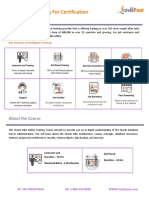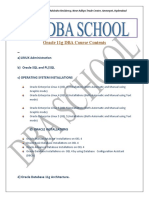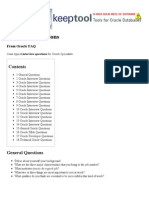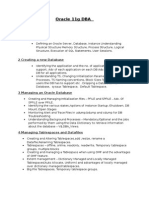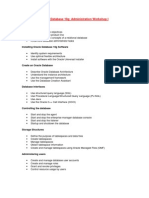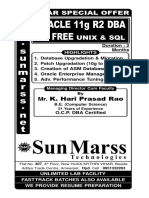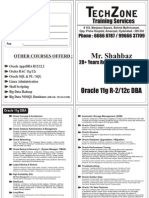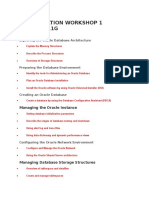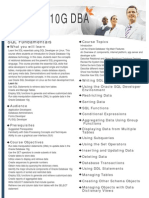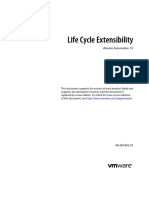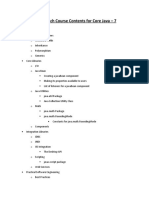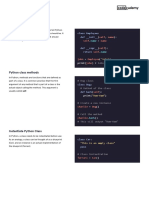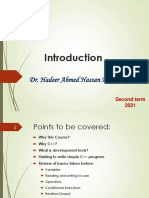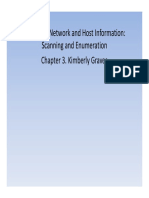0% found this document useful (0 votes)
10 views5 pagesOracle DBA 2 Week Study Plan
This document outlines a detailed 2-week study plan for Oracle DBA training, covering essential topics such as Oracle architecture, installation, user management, backup and recovery, performance tuning, and troubleshooting. Each day includes key points, sample questions and answers, and practical exercises to reinforce learning. The plan culminates in a mock interview and revision session to prepare for real-world application and assessment.
Uploaded by
fausacademyCopyright
© © All Rights Reserved
We take content rights seriously. If you suspect this is your content, claim it here.
Available Formats
Download as DOCX, PDF, TXT or read online on Scribd
0% found this document useful (0 votes)
10 views5 pagesOracle DBA 2 Week Study Plan
This document outlines a detailed 2-week study plan for Oracle DBA training, covering essential topics such as Oracle architecture, installation, user management, backup and recovery, performance tuning, and troubleshooting. Each day includes key points, sample questions and answers, and practical exercises to reinforce learning. The plan culminates in a mock interview and revision session to prepare for real-world application and assessment.
Uploaded by
fausacademyCopyright
© © All Rights Reserved
We take content rights seriously. If you suspect this is your content, claim it here.
Available Formats
Download as DOCX, PDF, TXT or read online on Scribd
/ 5




